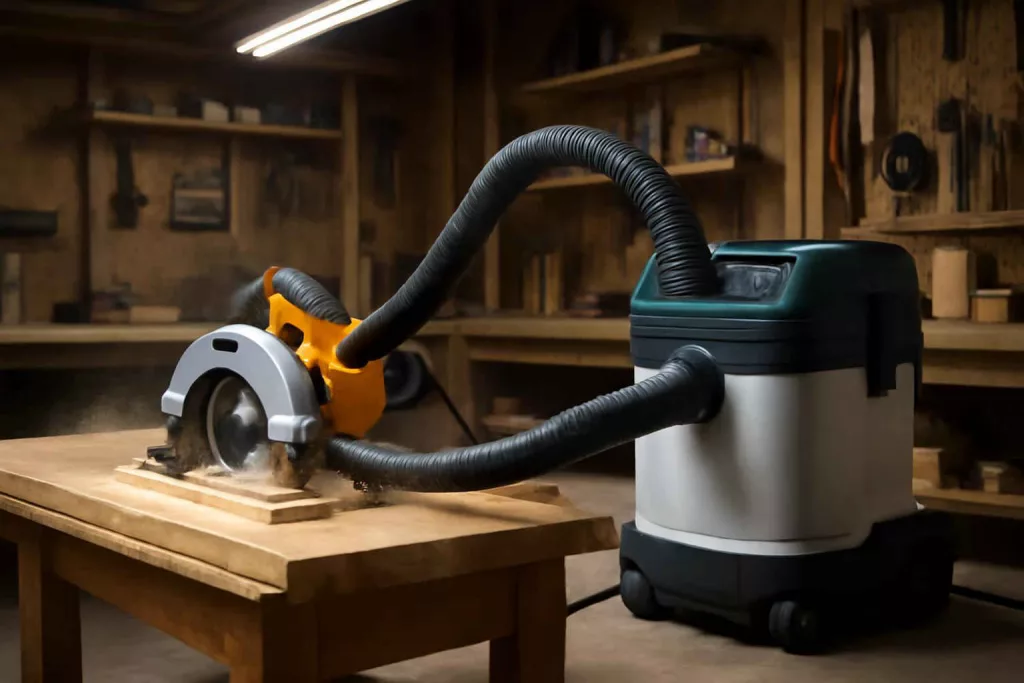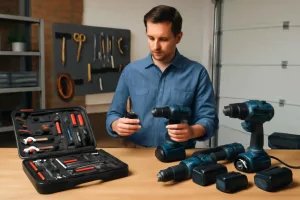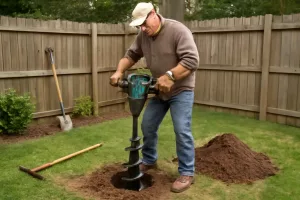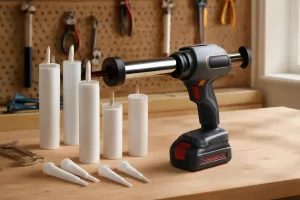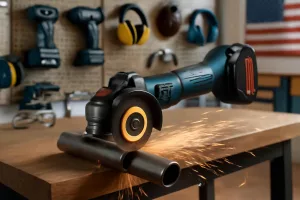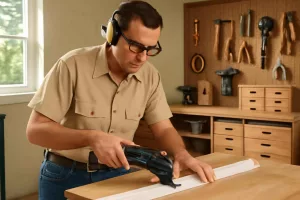Keeping your workshop free of dangerous dust is crucial for safe and precise woodworking. A high-quality dust extractor not only collects harmful particles but also prolongs the life of your power tools. If you’re searching for the best dust extractor for power tools, this guide delves into top models, key features to look for, and practical tips to integrate dust extraction into your workflow.
Why You Need a Dust Extractor for Power Tools
Health Benefits
Fine dust, especially from cutting or sanding wood, can cause respiratory problems over time. A dedicated dust extraction system captures those microscopic particles before they become airborne. Using a quality extractor reduces allergens, minimizes dust inhalation, and helps maintain a healthier workshop environment.
Tool Longevity and Precision
Dust buildup inside saws, routers, and sanders leads to overheating and accelerated wear. Connecting a powerful dust extractor ensures chips and fine debris are removed instantly, reducing internal contamination and keeping blade teeth and sanding surfaces clean for smoother cuts and finishes.
Shop Cleanliness and Maintenance
A cleaner workspace saves you hours of sweeping and cleanup. With an extractor linked directly to your tools, sawdust and debris go straight into a container or collection bag. For accessories like vacuum hoses and nozzles, check our detailed guide to attachment kits to optimize your dust-management setup.
Key Features to Consider When Choosing a Dust Extractor
Suction Power and Airflow (CFM)
Suction strength is measured in cubic feet per minute (CFM). Higher CFM ratings indicate more powerful airflow, essential when using larger tools or multiple connections. Match the extractor’s CFM to your most demanding tool’s dust output to ensure consistent extraction.
Filter Type and Efficiency
HEPA filters trap at least 99.97% of particles down to 0.3 microns. Some models come with self-cleaning filters, reducing manual maintenance. Look for extractors with replaceable filters and easy-access filter compartments to keep performance steady.
Portability and Size
If you move between job sites or need a compact solution, consider cordless or lightweight extractors. Cordless models like the DEWALT DCV581H combine portability with versatile power options. For stationary shop setups, larger units with wheels and sturdy housing offer stability and greater capacity.
Noise Level
Loud machines can be fatiguing. Compare decibel ratings and opt for models with noise-reduction features or optional mufflers. Lower noise levels improve communication and concentration during precision work.
Dust Capacity and Auto Clean Function
Consider how much dust the collection bag or container can hold. Large-capacity units reduce emptying frequency. Auto-clean or reverse-pulse functions help maintain suction by clearing dust from filters automatically, saving time on manual filter cleaning.
Top 7 Dust Extractors for Power Tools in 2024
We evaluated suction power, filter efficiency, portability, and user reviews to rank these models as the best dust extractors for power tools.
1. DEWALT DCV581H Cordless/Corded 18/20V MAX Handheld Vacuum
This versatile vacuum runs on battery or AC power, delivering up to 100 CFM. Its HEPA-rated filter captures 99.97% of particles. Lightweight and with a convenient carry handle, it’s perfect for quick cleanup and tool-port hookups. Buy on Amazon: DEWALT DCV581H.
2. Festool 574993 CT MIDI Dust Extractor
Festool’s CT MIDI offers 100 CFM airflow and a 3.5-gallon capacity. The microfilter plus bag system ensures superior dust retention. Its compact design and mobile cart base make it ideal for tight shops and frequent repositioning.
3. Bosch GAS18V-10 Cordless Vacuum
Powerful and portable, this Bosch model delivers 83 CFM with tool-triggered activation. The SDS filter cleaning system helps maintain suction, while its compact footprint fits under workbenches.
4. Makita XCV11Z 18V LXT Lithium-Ion Vacuum
Makita’s cordless vacuum offers 79.5 CFM and 27 inches of water lift. The tool-stop feature turns the vacuum on/off with compatible tools. Its compact design and washable filter make maintenance easy.
5. 3M Powermatics Vortex Dust Collector
Designed for heavy-duty use, this 8-gallon dust collector delivers 110 CFM and features a remote-controlled auto-cleaning filter. It’s ideal for larger workshops where multiple tools may operate simultaneously.
6. Shop-Vac 5989300 Wet/Dry Vacuum
With 5 peak HP and 100 CFM airflow, this classic Shop-Vac handles wet and dry debris. High capacity and compatibility with numerous attachment kits make it a versatile shop staple. Pair it with specialized hoses to connect to your miter saw; see our miter saw guide for tips.
7. Metabo HPT RP250YA Dust Collector
This compact unit integrates with Hitachi and Metabo HPT cordless tools. Offering 75 CFM, it’s perfect for router and sander applications. The replaceable filter cartridge simplifies cleanup after extended use.
How to Properly Connect and Use a Dust Extractor with Different Power Tools
With Circular Saws
Attach the extractor hose to the saw’s dust port using a flexible adapter. Ensure the hose length doesn’t pull on the saw during cuts. For straight, precise cuts, keep the extractor running before turning on the saw to stabilize airflow.
With Sanders
Belt and random-orbit sanders have built-in dust ports. Choose an extractor with 70+ CFM for effective pickup. Secure the hose to the sander and maintain consistent pressure. Empty the collection bag frequently to prevent reduced airflow.
With Planers and Routers
Planers generate large chips; opt for a high-capacity extractor (90+ CFM). Use a rigid hose for better chip throughput. For routers, a smaller hose and tight-fit adapter ensure fine dust is captured during edging and profiling tasks.
Maintenance Tips for Dust Extractors
Filter Cleaning and Replacement
Consult the manufacturer’s service interval. Washable filters should be cleaned with compressed air or water and fully dried before reuse. Replace HEPA filters annually or when damaged for optimal performance.
Hose and Port Inspection
Check hoses and adapters for cracks or blockages every month. Replace worn or collapsed hoses to maintain consistent suction. Inspect tool connections for secure fits to prevent leaks.
Preventing Clogs
Use smooth, short hose runs and avoid sharp bends. For heavy chip loads, periodically reverse airflow if your extractor supports it, or shake out collection bags to redistribute debris.
Frequently Asked Questions
Q1: Can I use a household vacuum cleaner as a dust extractor?
Standard vacuums lack the required CFM and HEPA filtration for fine dust. They clog quickly and risk motor damage. Dedicated dust extractors are engineered for continuous fine dust removal and higher suction.
Q2: Do all power tools require the same extractor capacity?
No. Tools like planers need higher CFM, while routers and sanders can work with lower airflow. Always match extractor power to your highest-demand tool to avoid performance issues.
Q3: How often should I empty the dust collection container?
Empty when it reaches about two-thirds capacity. Overfilled containers reduce airflow and strain the motor. Frequent emptying keeps suction strong and filters cleaner.
Q4: Is a cordless extractor as effective as a corded one?
Cordless extractors offer portability but usually provide lower CFM than corded units. Choose cordless for light-duty or remote jobs; opt for corded models for heavy, continuous shop work.
Conclusion
Investing in the best dust extractor for power tools enhances safety, tool life, and shop cleanliness. Assess suction power, filter efficiency, portability, and capacity to match your workshop needs. Whether you opt for a cordless model like the DEWALT DCV581H or a robust solution like the Festool CT MIDI, proper dust extraction transforms your workflow. For comprehensive cleaning setups, explore additional accessories and nozzles to extend your extractor’s versatility. Equip your shop with the right dust collector today and enjoy a cleaner, healthier, and more efficient workspace.
